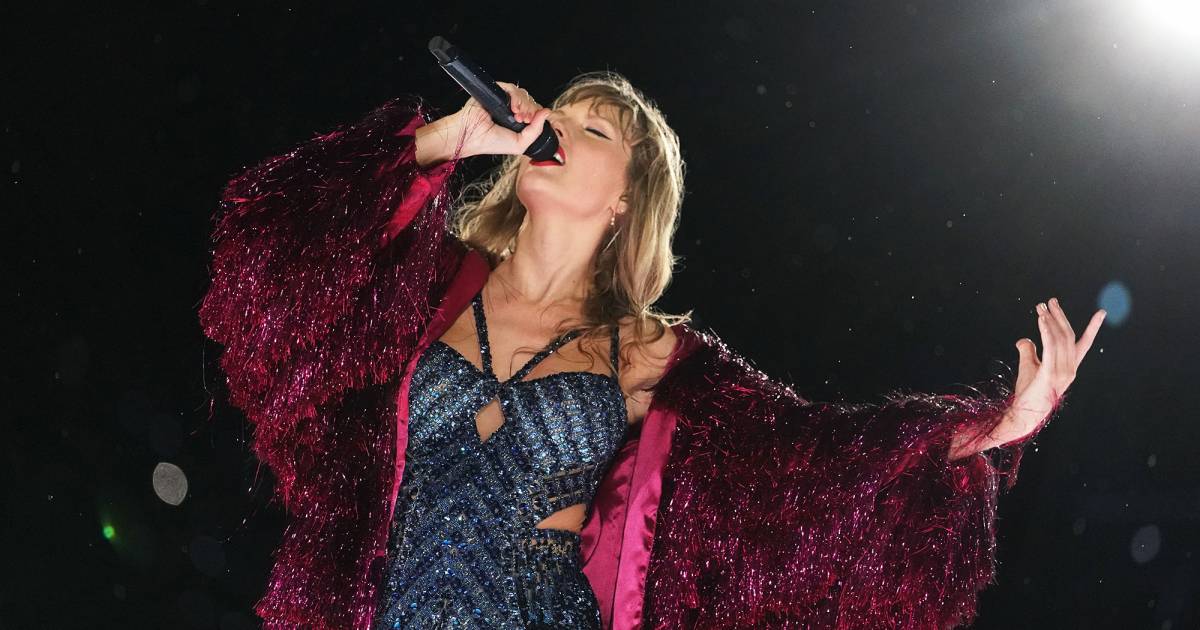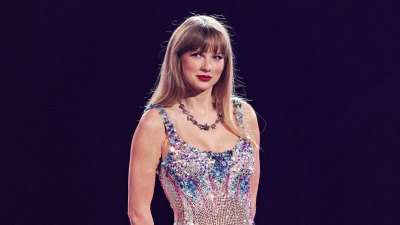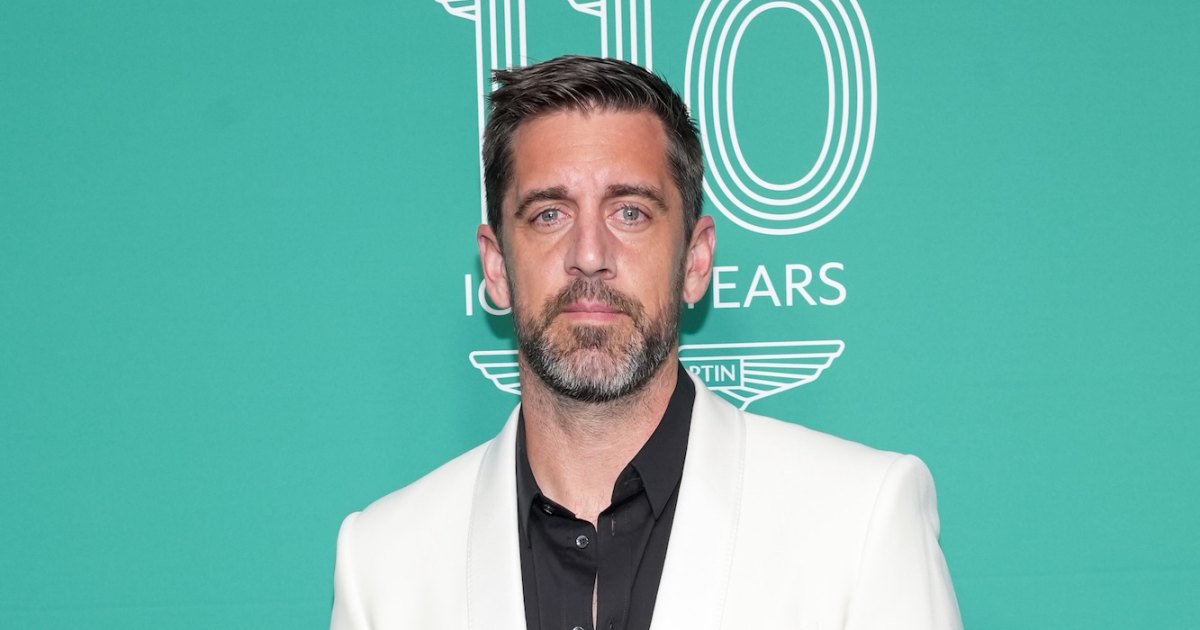If you were one of the millions of concertgoers who attended Taylor Swift’s The Eras Tour in the last year, you may have left the show wondering, “How did she do that?!”
Over 40 songs, 16 outfit changes and three hours of belting her heart out must leave the 34-year-old singer exhausted — she has to be lip-syncing, right? Foo Fighters’ frontman Dave Grohl seems to think so.
At one of his band’s shows in June, Grohl insinuated that the pop star does not sing live at her concerts. “You don’t want to suffer the wrath of Taylor Swift,” Grohl told the London crowd. “So we like to call our tour the ‘Errors Tour.’ We’ve had more than a few eras and more than a few f–king errors as well. Just a couple. That’s because we actually play live.”
One of Us Weekly’s readers wrote in to get to the bottom of the matter: “How much do musicians actually sing live at concerts?” Pam S. from San Angelo, Texas, asked Us in the latest issue of the magazine, on newsstands now. “Aren’t they usually lip-syncing to a studio recording?”
From The Eras Tour to other grand musical productions like Beyoncé’s Renaissance World Tour, presidential inaugurations and even Saturday Night Live performances, Us spoke to a music expert to get to the bottom of this topic.
“Modern singers rarely lip-sync,” Grammy-nominated mix and sound engineer Ariel Chobaz — who has worked with the likes of Rihanna, Drake, Nicki Minaj and more — tells Us. “However, they often sing along to backing tracks,” he adds, which are replays of prerecorded instruments and/or vocals.

There are about as many combos of live and “playback” elements as there are costume changes for Swift or drummers for Spinal Tap. Which is to say, a lot.
“A rock band most likely won’t use any backing tracks. A pop artist will most likely use a combination of backing tracks and live musicians, but the lead singer is almost always live,” Chobaz explains. “For big telecasted events like the Grammys, the logistics of having so many different performers back-to-back makes it impossible to mic all the musicians for every performance. In these cases, they are heavily relying on backing tracks for the band, but again, the lead vocal is live.”
Chobaz says choreography can factor in, as can the venue, but how “produced” a song is may matter most: It’s tough to recreate processed drum loops or samples on stage.
“Many parts of the song may not be able to be played live, like samples and heavily processed drum loops,” he says. “It also depends on how strictly they want to emulate the album version of the song. If they want to do a more stripped-down live version, that’s great, they will perform it live without any backing tracks. If they want to reproduce the album ‘sound,’ then they will use a lot of backing tracks and maybe only have the drums, guitar, bass and lead vocal performed live.”

As for Swift’s The Eras Tour, the pop star is definitely singing live vocals, but major stadium shows often utilize playback to create a “larger than life sound,” Chobaz says.
“This captures the best of both worlds as the main instruments and singing is live, with all the other sounds being playback,” he tells Us. “[This is] necessary because the lighting and stage effects like fire and smoke are all programmed and synced to the playback, so it’s important that the singer and band play in sync to the entire playback system.”
But sometimes it really looks like singers are lip-syncing, especially when there is a lag between the music and their lips moving — what about then?
According to Chobaz, this is often the result of technical error.
“Most of the time when it looks like they are lip-syncing, it’s because they have their mic turned down a bit lower than the lead vocal backing track, but if you listen carefully, you can still hear them singing live,” he says.
Have a burning entertainment question for our team of experts? Email Us at [email protected]
With reporting by Sarah Jones





